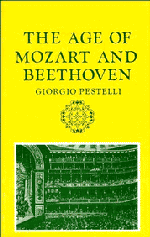I - INSTRUMENTAL MUSIC
Published online by Cambridge University Press: 10 November 2010
Summary
The geography of music in the middle of the eighteenth century
A great change was about to take place in the musical geography of Europe in the second half of the eighteenth century. Italy, ‘the true academy of music’ as Schütz had called it as early as 1648, the country that from the end of the Thirty Years' War had dominated almost the whole of Europe and become the land of singing and playing par excellence, was on the point of losing its supremacy and was about to enter a period of eclipse that was to affect its whole future history. This was clearly apparent at the end of the century: the most important musicians were not Italian, and the leading Italians were abroad, adopting styles different from those of their native country. While foreign musicians became established in Italy, instrumental music became the leading genre, the centre of new developments and changes – but Italy had exhausted its age-old reserves in this field.
This, of course, is an evaluation by posterity; for contemporaries Italy continued to be the home of music. Naples was still a brilliant centre of the first magnitude, with its conservatoires and internationally renowned Teatro San Carlo. Rome, under Benedict XIV, an intelligent man, receptive to contemporary European culture, enjoyed a period of theatrical success and was still the centre of sacred music with its Sistine and Julian chapels in St Peter's, St John Lateran and Santa Maria Maggiore.
- Type
- Chapter
- Information
- The Age of Mozart and Beethoven , pp. 1 - 40Publisher: Cambridge University PressPrint publication year: 1984

